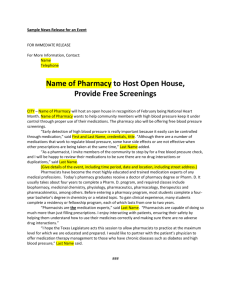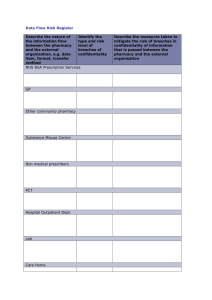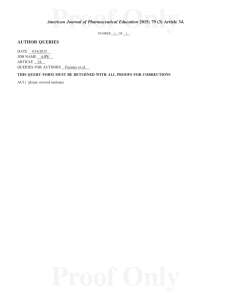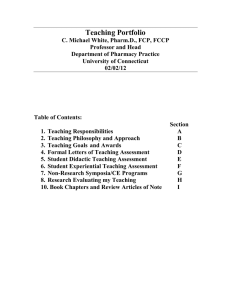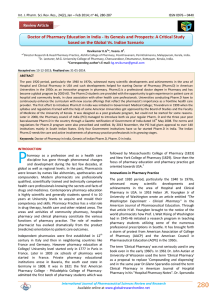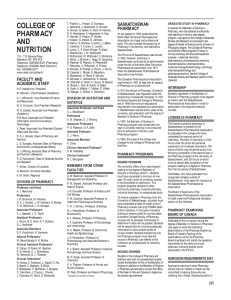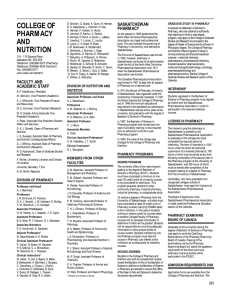Introduction Results Analysis of methods of active learning implemented in infectious disease curricula
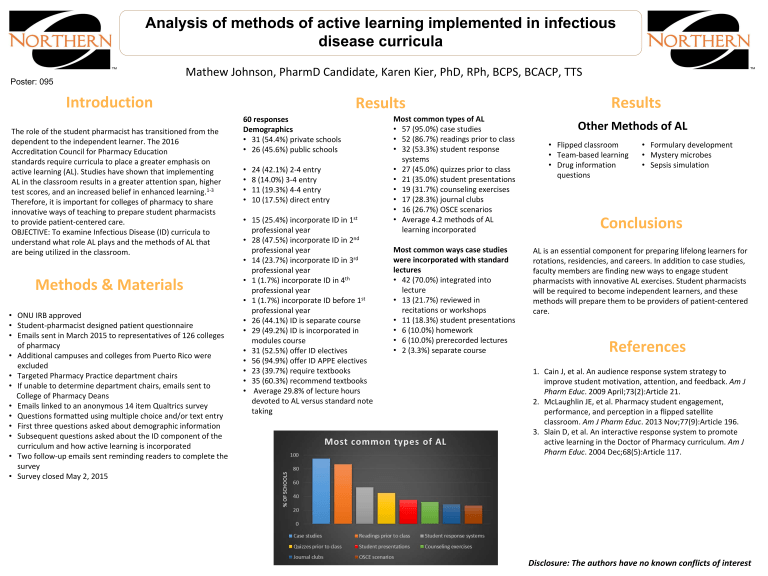
Analysis of methods of active learning implemented in infectious disease curricula
Poster: 095
Introduction
Mathew Johnson, PharmD Candidate, Karen Kier, PhD, RPh, BCPS, BCACP, TTS
The role of the student pharmacist has transitioned from the dependent to the independent learner. The 2016
Accreditation Council for Pharmacy Education standards require curricula to place a greater emphasis on active learning (AL). Studies have shown that implementing
AL in the classroom results in a greater attention span, higher test scores, and an increased belief in enhanced learning.
1-3
Therefore, it is important for colleges of pharmacy to share innovative ways of teaching to prepare student pharmacists to provide patient-centered care.
OBJECTIVE: To examine Infectious Disease (ID) curricula to understand what role AL plays and the methods of AL that are being utilized in the classroom.
Methods & Materials
•
ONU IRB approved
•
Student-pharmacist designed patient questionnaire
•
Emails sent in March 2015 to representatives of 126 colleges of pharmacy
•
Additional campuses and colleges from Puerto Rico were excluded
•
Targeted Pharmacy Practice department chairs
•
If unable to determine department chairs, emails sent to
College of Pharmacy Deans
•
Emails linked to an anonymous 14 item Qualtrics survey
•
Questions formatted using multiple choice and/or text entry
•
First three questions asked about demographic information
•
Subsequent questions asked about the ID component of the curriculum and how active learning is incorporated
•
Two follow-up emails sent reminding readers to complete the survey
•
Survey closed May 2, 2015
60 responses
Demographics
•
31 (54.4%) private schools
•
26 (45.6%) public schools
•
24 (42.1%) 2-4 entry
•
8 (14.0%) 3-4 entry
•
11 (19.3%) 4-4 entry
•
10 (17.5%) direct entry
•
15 (25.4%) incorporate ID in 1 st professional year
•
28 (47.5%) incorporate ID in 2 nd professional year
•
14 (23.7%) incorporate ID in 3 rd professional year
•
1 (1.7%) incorporate ID in 4 th professional year
•
1 (1.7%) incorporate ID before 1 st professional year
•
26 (44.1%) ID is separate course
•
29 (49.2%) ID is incorporated in modules course
•
31 (52.5%) offer ID electives
•
56 (94.9%) offer ID APPE electives
•
23 (39.7%) require textbooks
•
35 (60.3%) recommend textbooks
•
Average 29.8% of lecture hours devoted to AL versus standard note taking
Results
Most common types of AL
•
57 (95.0%) case studies
•
52 (86.7%) readings prior to class
•
32 (53.3%) student response systems
•
27 (45.0%) quizzes prior to class
•
21 (35.0%) student presentations
•
19 (31.7%) counseling exercises
•
17 (28.3%) journal clubs
•
16 (26.7%) OSCE scenarios
•
Average 4.2 methods of AL learning incorporated
Most common ways case studies were incorporated with standard lectures
•
42 (70.0%) integrated into lecture
•
13 (21.7%) reviewed in recitations or workshops
•
11 (18.3%) student presentations
•
6 (10.0%) homework
•
6 (10.0%) prerecorded lectures
•
2 (3.3%) separate course
Results
Other Methods of AL
•
Flipped classroom
•
Team-based learning
•
Drug information questions
•
Formulary development
•
Mystery microbes
•
Sepsis simulation
Conclusions
AL is an essential component for preparing lifelong learners for rotations, residencies, and careers. In addition to case studies, faculty members are finding new ways to engage student pharmacists with innovative AL exercises. Student pharmacists will be required to become independent learners, and these methods will prepare them to be providers of patient-centered care.
References
1. Cain J, et al. An audience response system strategy to improve student motivation, attention, and feedback.
Am J
Pharm Educ
. 2009 April;73(2):Article 21.
2. McLaughlin JE, et al. Pharmacy student engagement, performance, and perception in a flipped satellite classroom.
Am J Pharm Educ
. 2013 Nov;77(9):Article 196.
3. Slain D, et al. An interactive response system to promote active learning in the Doctor of Pharmacy curriculum.
Am J
Pharm Educ
. 2004 Dec;68(5):Article 117.
